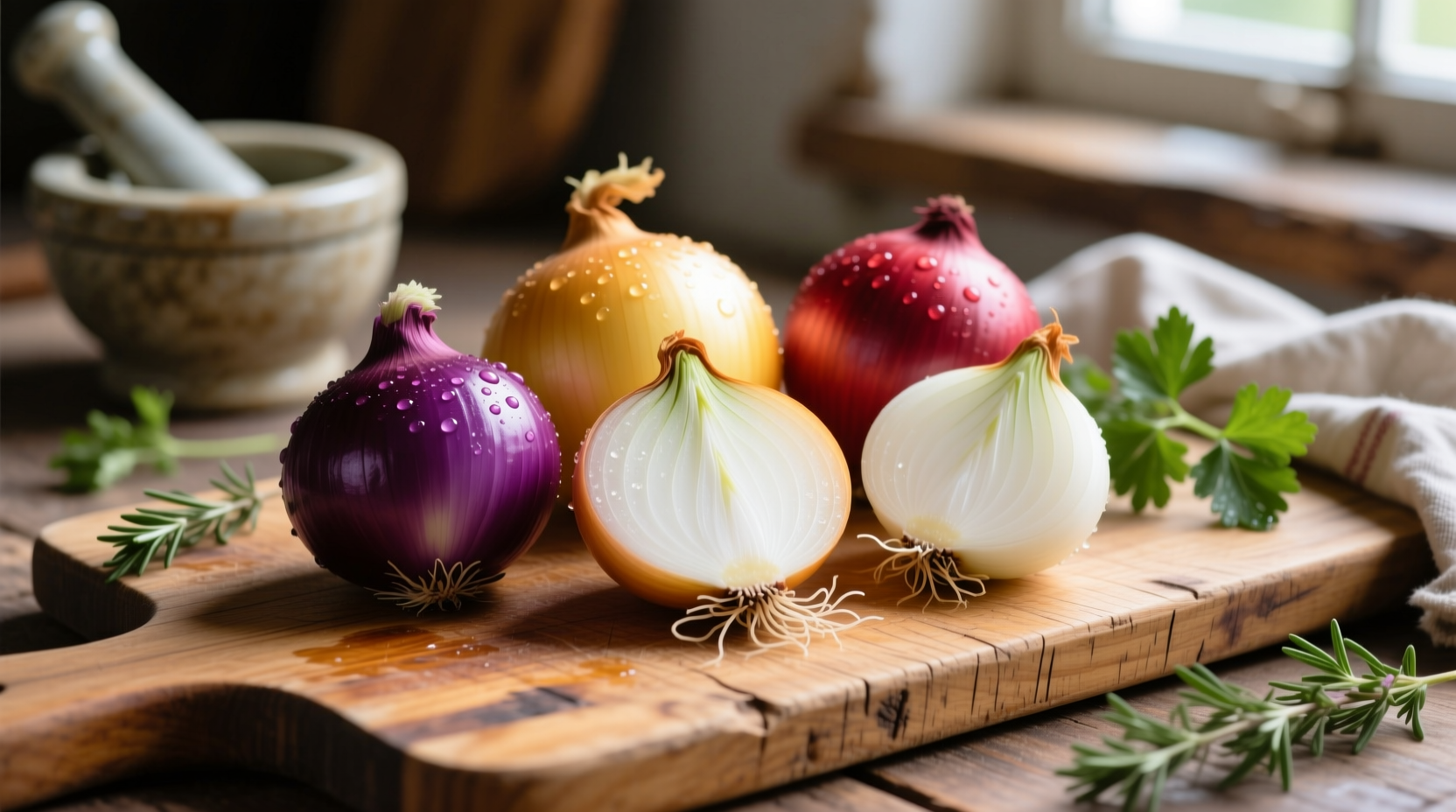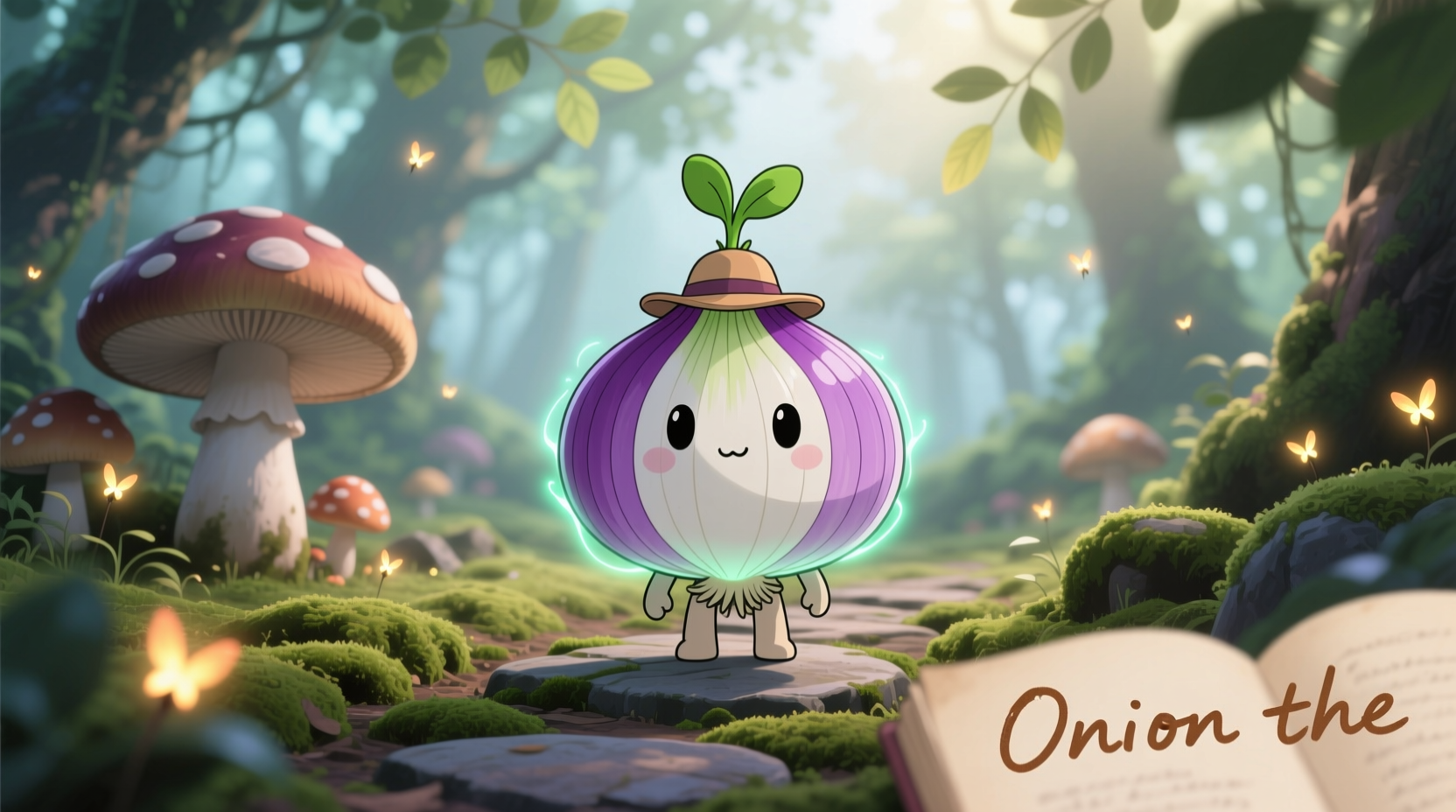Discover why onions form the flavor foundation of cuisines across every continent. This guide delivers actionable knowledge about selecting, preparing, and maximizing onion potential in your cooking—whether you're a beginner home cook or professional chef. You'll learn the science behind onion tears, how different varieties transform when cooked, and historical context that explains why this humble bulb became indispensable in kitchens worldwide.
The Essential Onion Primer
Onions (Allium cepa) rank among the world's oldest cultivated vegetables, with archaeological evidence dating back 5,000 years. These versatile bulbs contain sulfur compounds that create their distinctive flavor profiles and cause the infamous eye irritation during preparation. Understanding onion chemistry helps you manipulate their taste—from sharp and pungent when raw to sweet and complex when caramelized.

Historical Journey of Onions
Civilizations have valued onions since ancient times. Egyptian workers consumed them daily, as documented in pyramid inscriptions from 3200 BCE. Roman soldiers carried onions for strength, while medieval European apothecaries prescribed them for various ailments. The timeline below shows key milestones in onion cultivation and usage:
| Period | Development | Source |
|---|---|---|
| 3200 BCE | First documented cultivation in Egypt | British Museum Archives |
| 500 BCE | Introduction to India via Persian trade routes | USDA Historical Archives |
| 1600s | Spread to North America by European colonists | Library of Congress Collections |
| 1930s | Development of sweet onion varieties in Georgia and Texas | USDA Agricultural Research Service |
Major Onion Varieties Compared
Understanding onion varieties prevents cooking disasters. Each type has distinct sugar-to-sulfur ratios affecting flavor intensity and cooking behavior:
| Variety | Flavor Profile | Best Uses | Storage Life |
|---|---|---|---|
| Yellow Onions | Strong, pungent when raw; sweet when cooked | Caramelizing, soups, stews | 3-4 months |
| Red Onions | Sharp, slightly sweet with vibrant color | Salsas, salads, pickling | 2-3 weeks |
| White Onions | Crisp, clean flavor with moderate heat | Mexican cuisine, fresh salsas | 1-2 months |
| Sweet Onions | Mild, high sugar content, low sulfur | Raws applications, grilling | 2-3 weeks |
The Science Behind Onion Tears
When you cut an onion, you rupture cells containing sulfoxides. Enzymes convert these into sulfenic acids, which then form syn-propanethial-S-oxide—a volatile gas that reacts with eye moisture to create sulfuric acid. This triggers your tear response. Research from the Journal of Agricultural and Food Chemistry shows chilling onions for 30 minutes before cutting reduces tear production by 50% by slowing enzyme activity.
Culinary Applications & Techniques
Master these professional techniques to maximize onion potential:
- Dice consistency matters: Uniform 1/4-inch pieces ensure even cooking
- Caramelization science: Cook yellow onions slowly over medium heat for 30-40 minutes to develop 200+ flavor compounds
- Raw application tip: Soak sliced red onions in ice water for 10 minutes to reduce sharpness while maintaining crunch
- Flavor layering: Add onions at different cooking stages—raw for brightness, sautéed for depth, caramelized for sweetness
Health Benefits: What Research Shows
Onions contain quercetin, a flavonoid with demonstrated antioxidant properties. According to National Institutes of Health research, regular onion consumption correlates with:
- Reduced inflammation markers in cardiovascular studies
- Improved bone density in postmenopausal women
- Enhanced gut microbiome diversity due to prebiotic fiber content
- Lowered risk of certain digestive tract cancers
However, cooking methods affect nutrient retention—raw onions provide maximum quercetin, while caramelized onions develop beneficial compounds through the Maillard reaction.
Practical Selection & Storage Guide
Follow these evidence-based storage techniques to maximize shelf life:
- Choose firm bulbs with dry, papery skins—avoid soft spots or sprouting
- Store unpeeled onions in mesh bags in cool, dark, well-ventilated spaces
- Never refrigerate whole onions—cold temperatures increase moisture and spoilage
- Cut onions keep 7-10 days in airtight containers in refrigerator
- Freeze diced onions for up to 6 months (blanching not required)
Understanding these principles transforms how you use onions in cooking. The next time you reach for this kitchen staple, you'll make informed choices about variety selection, preparation methods, and cooking techniques that elevate your dishes from ordinary to exceptional.
Why do onions make you cry and how can you prevent it?
Onions release syn-propanethial-S-oxide gas when cut, which reacts with eye moisture to create mild sulfuric acid. Prevent tears by chilling onions for 30 minutes before cutting, using a sharp knife to minimize cell damage, cutting under running water, or wearing swim goggles. Research shows chilling reduces tear production by 50% by slowing enzyme activity.
What's the difference between sweet onions and regular onions?
Sweet onions (like Vidalia or Walla Walla) contain 5-6% sugar and lower sulfur compounds compared to regular yellow onions' 4-5% sugar and higher sulfur. This makes sweet onions milder and less pungent, ideal for raw applications. They also have higher water content, which reduces storage life to 2-3 weeks versus 3-4 months for yellow onions.
How do you properly caramelize onions?
Use yellow onions sliced uniformly 1/8-inch thick. Cook over medium-low heat with 1 tablespoon oil per onion. Stir every 5-7 minutes as they progress through stages: translucent (10 min), golden (20 min), deep brown (30-40 min). Add 1/4 teaspoon salt at start to draw out moisture. Proper caramelization develops over 30-40 minutes—rushing creates burnt rather than sweet onions.
Can you substitute different onion varieties in recipes?
Yes, but with adjustments. Yellow onions work in most cooked applications. For raw uses requiring mildness, substitute sweet onions. When color matters (like salads), use red onions. White onions provide authentic flavor in Mexican dishes. Remember: stronger onions require longer cooking to mellow, while sweet onions burn more easily. Always adjust quantities based on variety strength—use 25% less white onion than yellow in equal applications.











 浙公网安备
33010002000092号
浙公网安备
33010002000092号 浙B2-20120091-4
浙B2-20120091-4